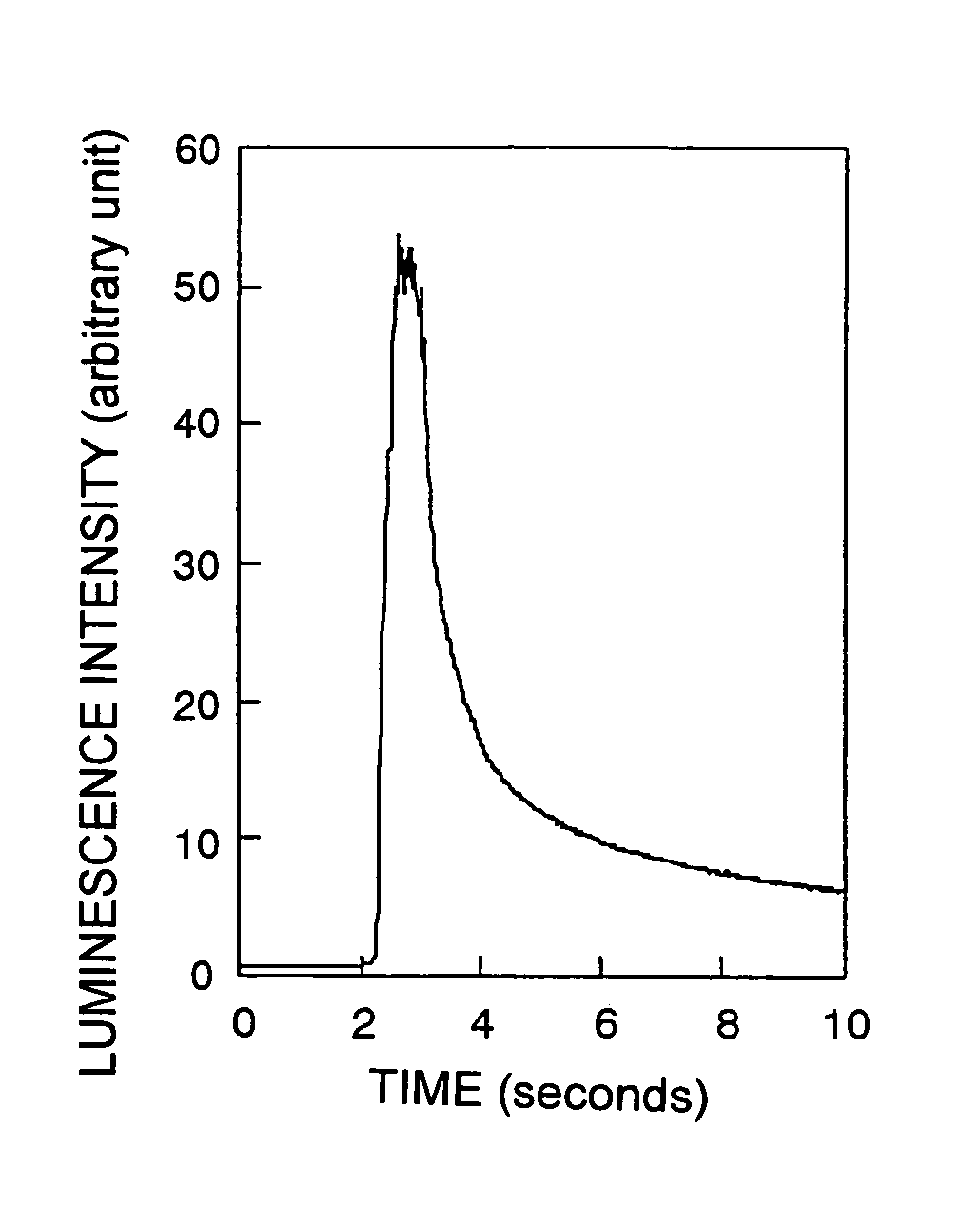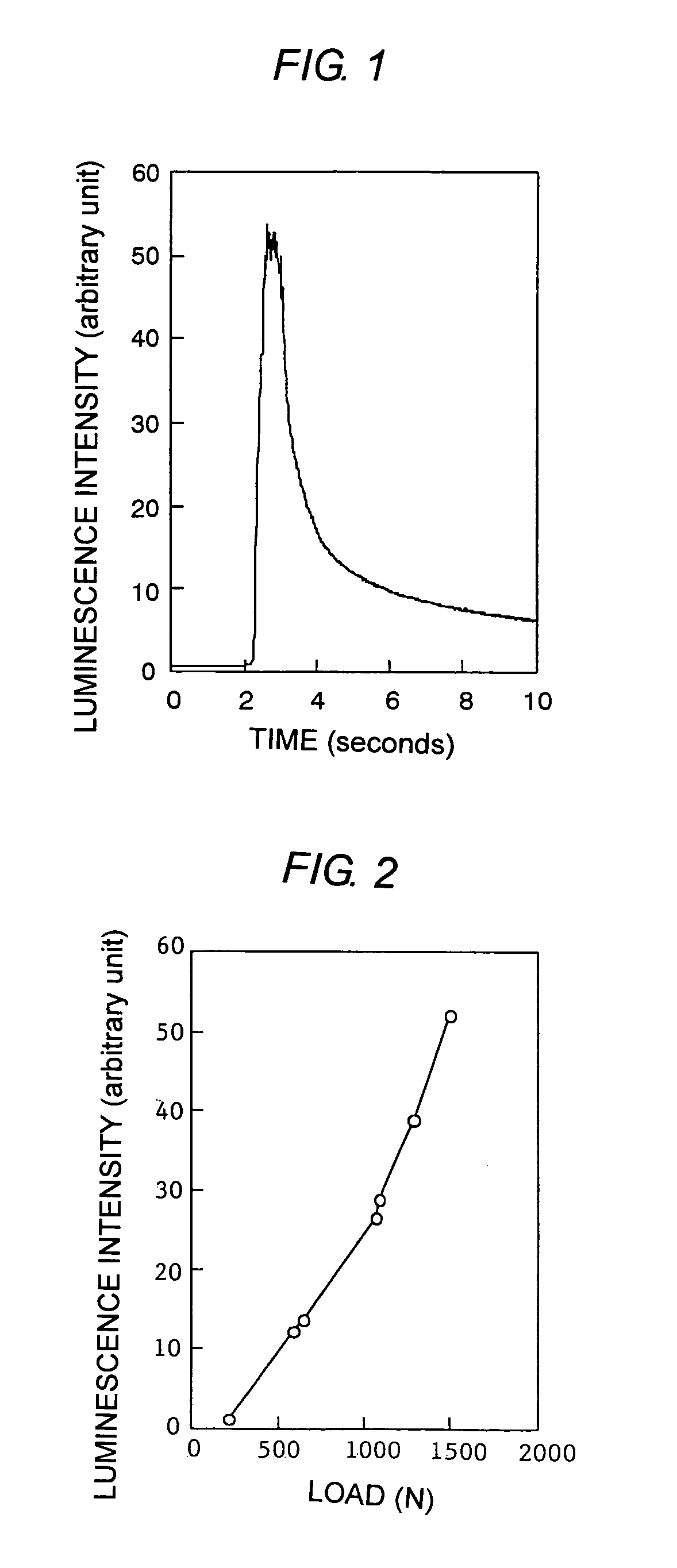Mechanoluminescence material and process for producing the same
a technology of mechanoluminescence and material, applied in the direction of luminescent compositions, lighting and heating apparatus, and light emission, etc., can solve the problems of limited application field, limited range of matrix materials to be used, and no investigation of material capable of emitting ligh
- Summary
- Abstract
- Description
- Claims
- Application Information
AI Technical Summary
Benefits of technology
Problems solved by technology
Method used
Image
Examples
example 1
[0028]A mechanoluminescence material was prepared by blending SrCO3, MgCO3 and Al2O3 each in a powder form having an average particle diameter of about 10 μm in a proportion corresponding to SrMgAl6O11 as the matrix material, thoroughly blending with further addition of 20% by moles of a boric acid powder (average particle diameter 10 μm) as a flux and 0.5% by moles (calculated for the metallic element) of a Eu2O3 powder to give the center of luminescence and firing the thus obtained blend at 1300° C. for 4 hours in an atmosphere of argon containing 5% by volume of hydrogen.
[0029]In the next place, a sample was prepared by pelletizing this mechanoluminescence material with an epoxy resin as a binder.
[0030]By using a vise, a mechanical action of 150 N was applied to this sample and the change with time in the luminescence intensity there is shown as a graph in FIG. 1. This sample emitted green light which was strong enough as to be clearly recognizable with naked eyes. The highest lu...
examples 2 to 4
[0034]By using the matrix materials indicated in Table 1, mechanoluminescence materials with Eu to serve as the center were prepared in the same manner as in Example 1. The highest luminescence intensities thereof were determined and the results are shown in Table 1.
[0035]
TABLE 1MatrixCenter ofluminescencematerialluminescenceintensity (cps)Example 1SrMgAl6O11Eu24990Example 2Sr2Al6O11Eu9787Example 3SrLaAl3O7Eu28694Example 4SrYAl3O7Eu4611ComparativeSrMgAl6O11None91Example
[0036]As is understood from this table, the luminescence intensity is remarkably increased by doping with a metal for the center of luminescence.
PUM
| Property | Measurement | Unit |
|---|---|---|
| temperature | aaaaa | aaaaa |
| temperature | aaaaa | aaaaa |
| time | aaaaa | aaaaa |
Abstract
Description
Claims
Application Information
 Login to View More
Login to View More - R&D
- Intellectual Property
- Life Sciences
- Materials
- Tech Scout
- Unparalleled Data Quality
- Higher Quality Content
- 60% Fewer Hallucinations
Browse by: Latest US Patents, China's latest patents, Technical Efficacy Thesaurus, Application Domain, Technology Topic, Popular Technical Reports.
© 2025 PatSnap. All rights reserved.Legal|Privacy policy|Modern Slavery Act Transparency Statement|Sitemap|About US| Contact US: help@patsnap.com


